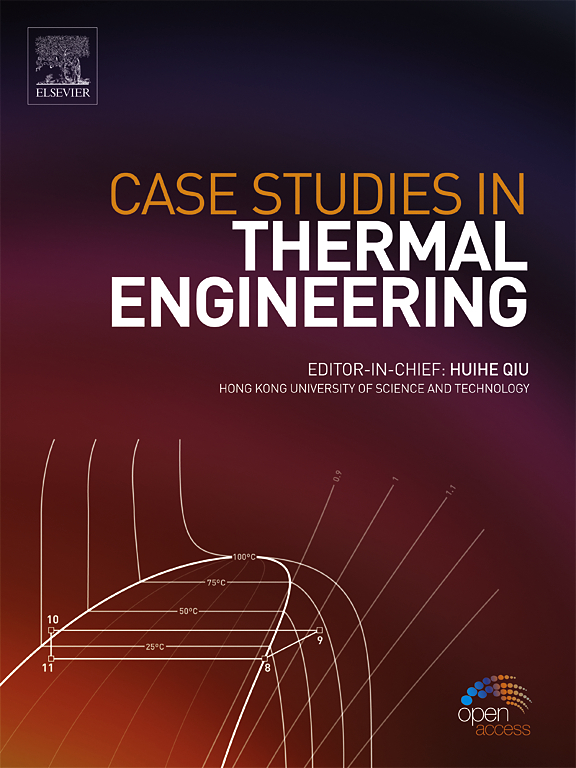Comprehensive study on cooling effectiveness and thermoelectric conversion of a novel helium/hydrogen-based closed Brayton cooling system for a hydrogen aero-engine
IF 6.4
2区 工程技术
Q1 THERMODYNAMICS
引用次数: 0
Abstract
The Brayton cycle and thermoelectric generators offer significant potential for cooling hydrogen aero-engines. However, existing research on Brayton cooling schemes integrated with thermoelectric generators (TEGs) remains limited, typically relying on assumed state parameters that are challenging to obtain. This study proposes a one-dimensional method that considers the coupling relationships between the mainstream, TEGs, and coolant, thereby investigating the cooling and thermoelectric conversion processes of aero-engines under real operating conditions. Subsequently, four cooling schemes—direct cooling (DC), Brayton cooling (BC), direct thermoelectric cooling (DTC), and Brayton thermoelectric cooling (BTC)—are analyzed. Consequently, the DC provides the best cooling performance, with the highest wall temperature of hot components below 750 K. The BC generates the highest mechanical power, reaching 124.7 kW. Furthermore, the utilization of TEGs reduces the cooling efficiency but increases the total power output of the schemes. Compared to the DC, the maximum wall temperature of the DTC increases by 496.3 K, while the thermoelectric power is the greatest, reaching 116.6 kW. The maximum wall temperature of the BTC rises by 335.5 K compared to the BC, whereas its total power output is the highest, at 142.3 kW. This study guides the cooling and waste heat utilization in hydrogen aero-engines.
求助全文
约1分钟内获得全文
求助全文
来源期刊

Case Studies in Thermal Engineering
Chemical Engineering-Fluid Flow and Transfer Processes
CiteScore
8.60
自引率
11.80%
发文量
812
审稿时长
76 days
期刊介绍:
Case Studies in Thermal Engineering provides a forum for the rapid publication of short, structured Case Studies in Thermal Engineering and related Short Communications. It provides an essential compendium of case studies for researchers and practitioners in the field of thermal engineering and others who are interested in aspects of thermal engineering cases that could affect other engineering processes. The journal not only publishes new and novel case studies, but also provides a forum for the publication of high quality descriptions of classic thermal engineering problems. The scope of the journal includes case studies of thermal engineering problems in components, devices and systems using existing experimental and numerical techniques in the areas of mechanical, aerospace, chemical, medical, thermal management for electronics, heat exchangers, regeneration, solar thermal energy, thermal storage, building energy conservation, and power generation. Case studies of thermal problems in other areas will also be considered.
 求助内容:
求助内容: 应助结果提醒方式:
应助结果提醒方式:


